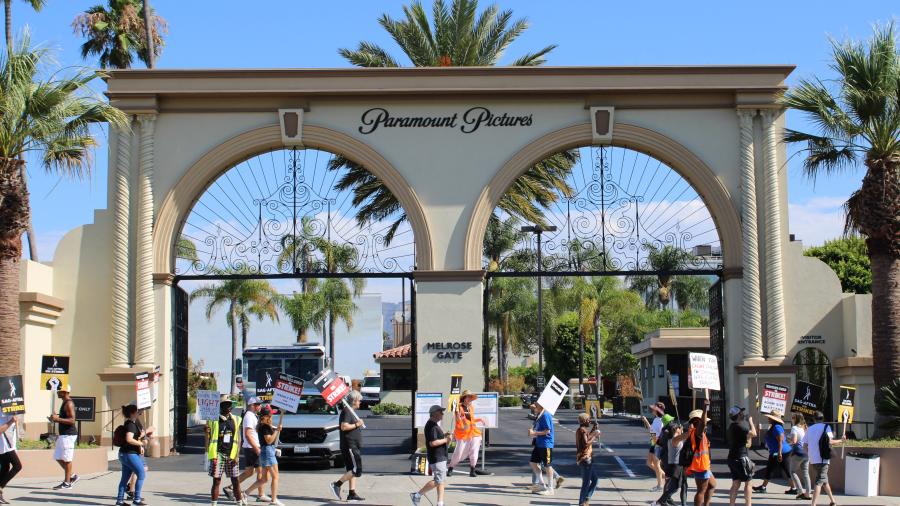
On Wednesday, September 27, the Writer’s Guild of America (WGA) ended its strike against the Alliance of Motion Picture and Television Producers (AMPTP). In the coming weeks, guild members will vote to ratify a new three-year Minimum Basic Agreement with the AMPTP.
The strike, which began in May, lasted 148 days. It’s the longest the WGA has been on strike since 1988, when Hollywood’s writers stopped work for 154 days.
SAG-AFTRA, Hollywood’s screen actors guild, has now reached day 77 of its strike, which began in July. Many film and TV programs will not return to production until the SAG-AFTRA strike also ends.
Declaring the new contract a victory, the WGA announced that it had won major concessions from entertainment studios. New provisions in the contract include increases in writers’ minimum pay and residual compensation from streaming networks, minimum staffing requirements for TV studios, and restrictions on the use of artificial intelligence in screenwriting.
The WGA and SAG-AFTRA have been at the forefront of the fight for workers’ protections against AI-generated content and products in the creative industries. But media workers are not the only ones wary of how companies may deploy AI tech to compromise their employment. A recent survey from Pew Research Center found that 62% of Americans believe AI will have a major impact on U.S. workers generally in the next 20 years, and 32% think AI will hurt workers more than it will help them.
Labor organizing in the media industries has exploded in recent years, and shows no signs of slowing any time soon. While union membership and work stoppages have been on a steady decline in the U.S., the news and entertainment industries have seen a comparative increase in labor action.
According to the Bureau of Labor Statistics, only 10.1% of employed workers in the U.S. were members of a union in 2022, down from 13.4% in 2000. However, in the media industries, union membership rates are growing. 17.3% of motion picture and sound recording workers and 11.3% of radio and television broadcasting workers were members of a union in 2022 — the highest ever recorded union membership rate in both industries since the BLS began recording the data in 2000.
This trend likely reflects workers’ collective response to increasingly precarious labor conditions, even in high-profile media jobs. The 21st century entertainment and news industries have been characterized by frequent, volatile changes in consumer technology and audience habits, leading to a boom-and-bust cycle of hype-chasing and mass layoffs.
The WGA, like SAG-AFTRA, hopes that its demands will promote job security and a higher standard of living among the guild’s 11,500 film and TV writers, who are essentially freelance gig workers. In the past decade, writer-producer pay has declined 4%, or 23% adjusted for inflation, according to WGA. Under the new contract, minimum pay will increase 5% for most guild members, followed by 4% and 3.5% consecutive increases over the next two years.
Hollywood’s visual effects workers — another frequently exploited professional group — are also engaged in the media industry’s union drive. The Walt Disney Company’s Marvel Studios visual effects workers voted unanimously to unionize in September.
We may be witnessing a renaissance of labor action in the media industries. Positioned at the intersection of technological development and current events, precarious media workers are often ahead of the curve in predicting and addressing the key issues for tomorrow’s labor movements. WGA’s ability to assert labor power and win its demands may set a precedent for how other segments of the media industry respond to developments in AI, wage stagnation, and gig work pay structures in the coming years.
(Photo Credit: Chris Long via Unsplash)